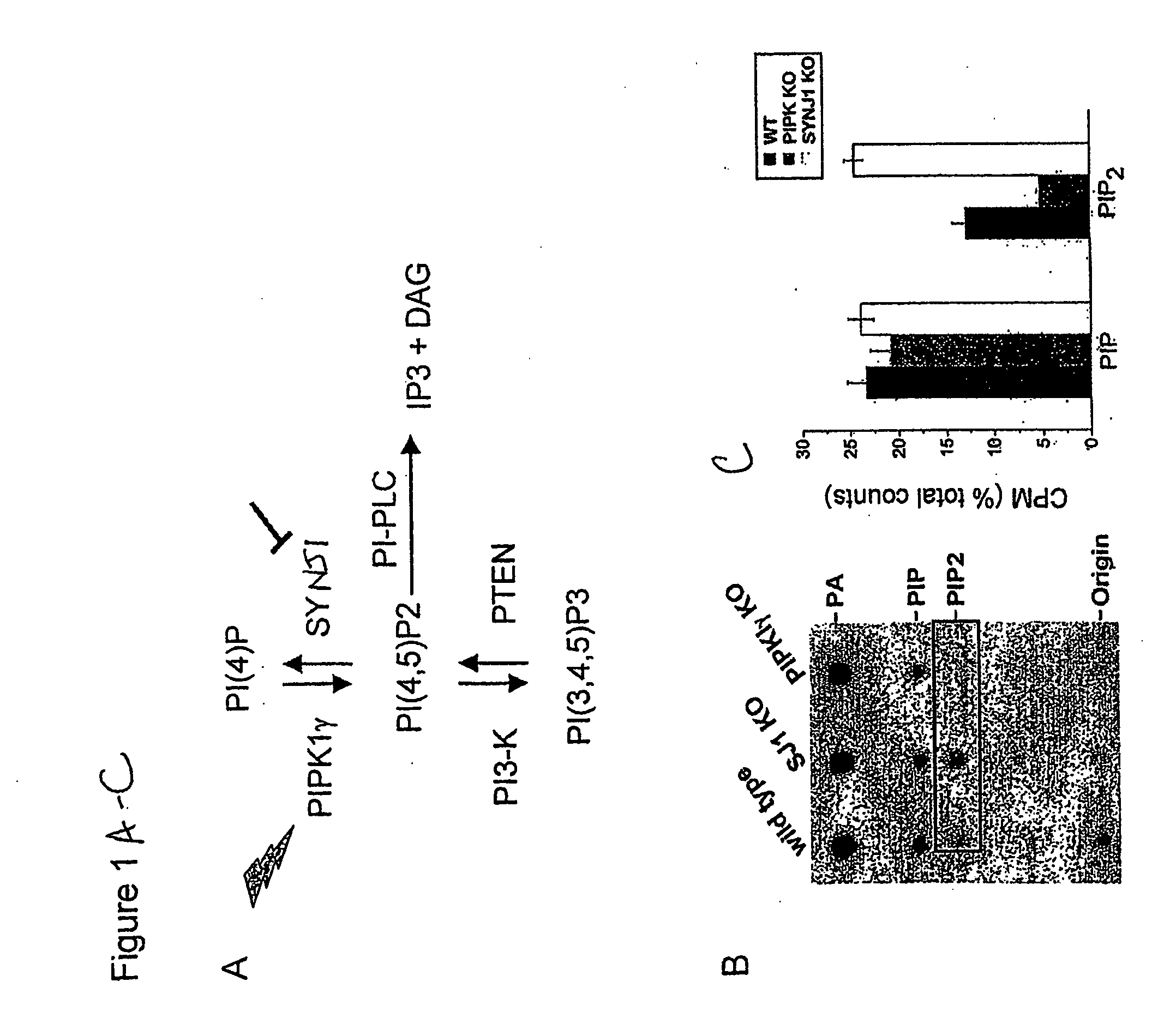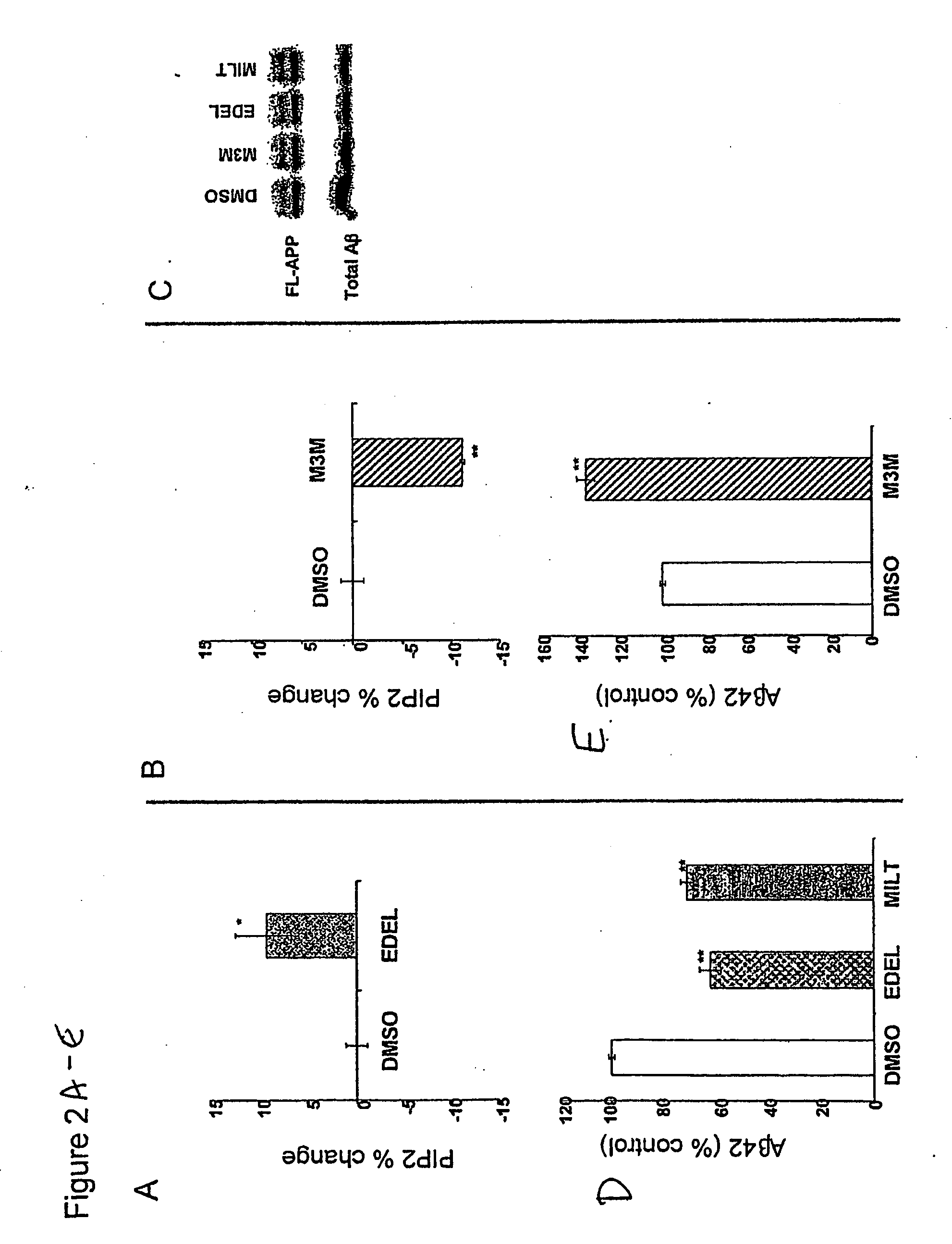Phosphoinositide modulation for the treatment of alzheimer's disease
a technology of phosphoinositide and alzheimer's disease, applied in the direction of phosphorous compound active ingredients, drug compositions, biocides, etc., can solve the problems of progressive decline in cognitive and functional abilities, and achieve the effects of improving memory, increasing pip2 levels, and reducing neurotoxic a42 peptide levels
- Summary
- Abstract
- Description
- Claims
- Application Information
AI Technical Summary
Benefits of technology
Problems solved by technology
Method used
Image
Examples
working example
8. WORKING EXAMPLE
Natural Compounds Derived From Heat-Processed Ginseng Reverse Molecular Phenotype Associated with FAD-Linked Presenilin Mutations
[0109]It has been shown that several natural compounds (dammarane triterpenoids) that originate from heat-processed ginseng, including Rk1 and (20S)Rg3, preferentially lower the production of Aβ42 in cell lines and primary neurons (FIG. 14A-C and see United States Patent Application Publication No. 20050245465, Ser. No. 10 / 834773, by Kim and Chung, published Nov. 3, 2005), with concomitant increase in Aβ37 and Aβ38, by affecting the γ-secretase cleavage step of Aβ42 generation. Administration of an Aβ42-lowering ginsenoside Rg3 results in a decreased Aβ42 / Aβ40 ratio in cultured neurons and the brains of a Tg2576 transgenic mouse model of Aβ (FIG. 15A-B). In cell-free assays, these compounds inhibited Aβ generation, while preserving γ-secretase-mediated generation of intracellular domains of APP, Notch and the p75 neurotrophin receptor. Mo...
PUM
| Property | Measurement | Unit |
|---|---|---|
| density | aaaaa | aaaaa |
| fluorescence | aaaaa | aaaaa |
| affinity | aaaaa | aaaaa |
Abstract
Description
Claims
Application Information
 Login to View More
Login to View More - R&D
- Intellectual Property
- Life Sciences
- Materials
- Tech Scout
- Unparalleled Data Quality
- Higher Quality Content
- 60% Fewer Hallucinations
Browse by: Latest US Patents, China's latest patents, Technical Efficacy Thesaurus, Application Domain, Technology Topic, Popular Technical Reports.
© 2025 PatSnap. All rights reserved.Legal|Privacy policy|Modern Slavery Act Transparency Statement|Sitemap|About US| Contact US: help@patsnap.com



